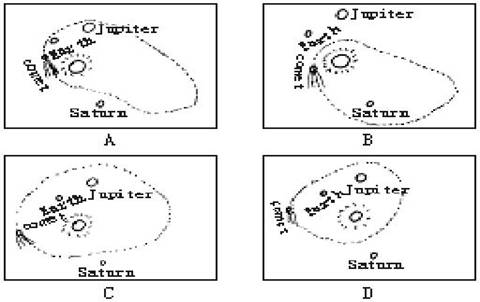题目内容
Biosphere 2, as it is called, was built not far from Tucson in 1984 and is now run by Columbia University. This huge(7,200,000-cubic-foot)glass and steel construction contains several separate ecosystems, including a desert, a rain forest, and a 900,000-gallon “ocean.” The climatic conditions-humidity, temperature, air quality-are regulated by sensors and can be adjusted as needed or desired. For example, a rainstorm can be created to increase the humidity. The adjustable features of Biosphere 2 make it an ideal location to perform experiments to help determine the effects of such climatic changes as global warming.
The current conditions at Biosphere 2 are vastly different from those in 1993, when eight people who had moved into the environment with great fanfare two years earlier moved out in failure. Though promising to be self-sufficient(自足的), these “colonists” had so much trouble regulating the environment that they reportedly had food smuggled into them. Oxygen levels became dangerously low; most plants and animals died. In taking over the unsuccessful site, Columbia hopes to erase its notorious past by focusing on small research projects that gradually answer some of Biosphere 1’s — that is, Earth’s most basic environment questions.
- 1.
This passage primarily deals with _________.
- A.conditions of life in Biosphere 2
- B.building controlled environments on other planets
- C.why Biosphere 2 failed in the past
- D.what makes a good biosphere colonist
- A.
- 2.
Biosphere 2 is now run by _________.
- A.a group of eight colonists
- B.Columbia University
- C.the city of Tucson
- D.scientists who hope to establish Biosphere 3
- A.
- 3.
The passage suggests that earlier colonists of Biosphere 2 _________.
- A.did not like living in a controlled environment
- B.found it very difficult to live in a controlled environment
- C.still are involved with Biosphere 2
- D.have now left the country in disgrace
- A.
- 4.
The writer helps you understand what Biosphere 2 is like by _________.
- A.comparing its features with those of an outer space biosphere
- B.explaining the process by which it was constructed
- C.referring to an interview with one of former inhabitants
- D.describing its appearance and conditions
- A.
- 5.
In paragraph 3 the word “notorious” means _________.
- A.well known for something good
- B.well known for something bad
- C.very dangerous
- D.quite interesting
- A.

Drawings of human colonies on other planets often picture the entire community under a glass or plastic bubble. The bubble is intended to create an atmosphere with adequate oxygen and other essential elements. But similar bubble-like structures have also been constructed on earth. One of the most famous, and controversial, is a site in the Arizona desert.
Biosphere 2, as it is called, was built not far from Tucson in 1984 and is now run by Columbia University. This huge(7,200,000-cubic-foot)glass and steel construction contains several separate ecosystems, including a desert, a rain forest, and a 900,000-gallon “ocean.” The climatic conditions-humidity, temperature, air quality-are regulated by sensors and can be adjusted as needed or desired. For example, a rainstorm can be created to increase the humidity. The adjustable features of Biosphere 2 make it an ideal location to perform experiments to help determine the effects of such climatic changes as global warming.
The current conditions at Biosphere 2 are vastly different from those in 1993, when eight people who had moved into the environment with great fanfare two years earlier moved out in failure. Though promising to be self-sufficient(自足的), these “colonists” had so much trouble regulating the environment that they reportedly had food smuggled into them. Oxygen levels became dangerously low; most plants and animals died. In taking over the unsuccessful site, Columbia hopes to erase its notorious past by focusing on small research projects that gradually answer some of Biosphere 1’s — that is, Earth’s most basic environment questions.
【小题1】This passage primarily deals with _________.
| A.conditions of life in Biosphere 2 |
| B.building controlled environments on other planets |
| C.why Biosphere 2 failed in the past |
| D.what makes a good biosphere colonist |
| A.a group of eight colonists |
| B.Columbia University |
| C.the city of Tucson |
| D.scientists who hope to establish Biosphere 3 |
| A.did not like living in a controlled environment |
| B.found it very difficult to live in a controlled environment |
| C.still are involved with Biosphere 2 |
| D.have now left the country in disgrace |
| A.comparing its features with those of an outer space biosphere |
| B.explaining the process by which it was constructed |
| C.referring to an interview with one of former inhabitants |
| D.describing its appearance and conditions |
| A.well known for something good | B.well known for something bad |
| C.very dangerous | D.quite interesting |
